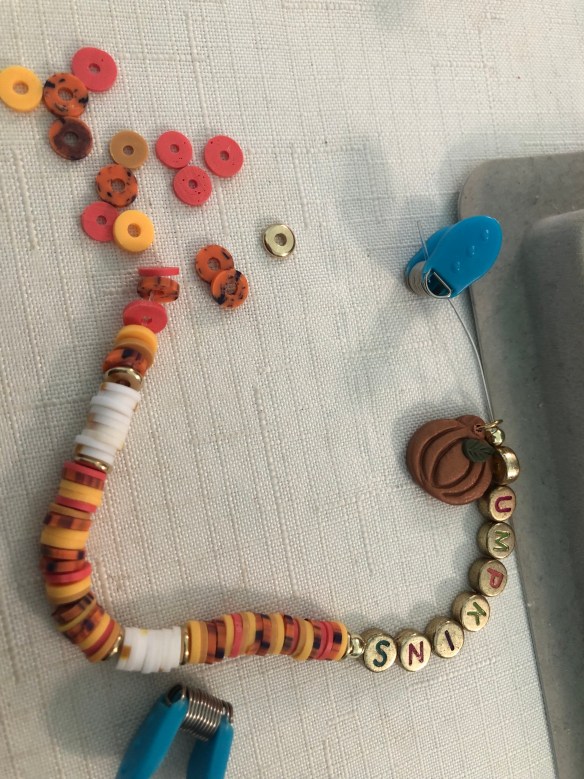“Oh that bracelet is really pretty! Maybe I should try doing that. It really looks easy.”
Well, it is. Sort of.
But you don’t know what goes into the making of a bracelet or necklace. It’s what you don’t see before the bracelet is finished.
I didn’t know what went into it all before I became hooked on making bracelets and necklaces.
At first, I’ll admit, I copied designs I found online. Well not totally copied, but fairly close. But those were for me, and certainly not to sell.
Then I started making my own designs, which was a lot more enjoyable and creative.
Getting ideas and then finding the right beads is a lot of fun. Usually. Unless you can’t find what you’re looking for. So many times I’ve had a particular color and style of bead in mind, but can’t find it in the local craft stores.


Ordering online is the only other option. I don’t paying for shipping, but sometimes there’s no other choice if Amazon doesn’t have what I need. And I hate waiting, but what other choice do I have?
Now I do have a rather large assortment of beads in the studio, since I’ve been doing this for awhile.



But it seems like there’s always something else I need.
Putting the design together is usually easy, as long as you have an idea what you’re going to do. I use a bead board to plan the jewelry out which allows me to not only see the design as I go but also make sure the size is correct. Which is very important.



Then comes the part I really don’t enjoy. Stringing is not that bad, and I have several different kinds and sizes of beading filament and wire that I use.
Note to newbies: be sure to allow yourself enough filament to have at least an inch of filament at each end so you’ll be able to tie off the bracelet without the beads coming off. Yes,it’s happened to me many times, and I scold myself for doing it every time! You’d think I’d learn eventually. If the ends aren’t long enough to tie your knots correctly, you’re going to regret it.

And be sure to use a bead stopper on each end of the almost finished bracelet or necklace. My favorite are the “bead bugs”. I like the name, but they really work well. I probably have 20 sets of them so I can make a lot of bracelets or necklaces at one time. Then complete the final steps with several pieces at a time.
Because for me, the most difficult part of finishing a stretch bracelet is gluing the knot, which is an extremely important final step to be sure that knot holds. Why is it so difficult?
For one thing, it’s very precise, and the smaller the beads, the harder it is to tie the knots and position the glue correctly. I use a brand called G-S Hypo Cement which dries quickly, and because of the type of applicator, it’s fairly easy to get the right amount on there. Let the glue dry for a few hours, snip the ends off, and you’re done.
The problem, you may ask? Getting the cap back on the tube in exactly the right place. Plus my astigmatism makes it even harder! You can see from the picture below that it’s very slim and tiny. I love the way you can manipulate the drop of glue, but let me tell you, putting that cap back on is not easy.
The other closure types, lobster claw or toggle clasps, can be easily as frustrating until you master the art of the crimp. (Just make sure to include the clasps in the overall length of your jewelry.) Putting the actual crimp bead on isn’t really that difficult. But finishing it off with a crimp cover? Let’s just say I haven’t mastered it as well as I’d like. The crimp covers are small, and have to be positioned just right to cover the crimp. And with astigmatism, it’s worse than putting the cap on the glue!
And if you mess up on these last steps, well, you sort of have to start over. Which is certainly not fun.
But the finished products are definitely worth it.


